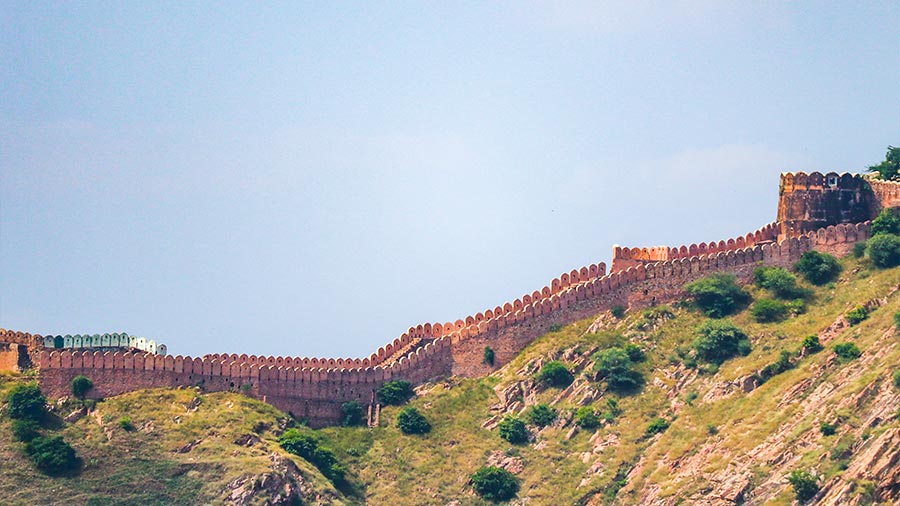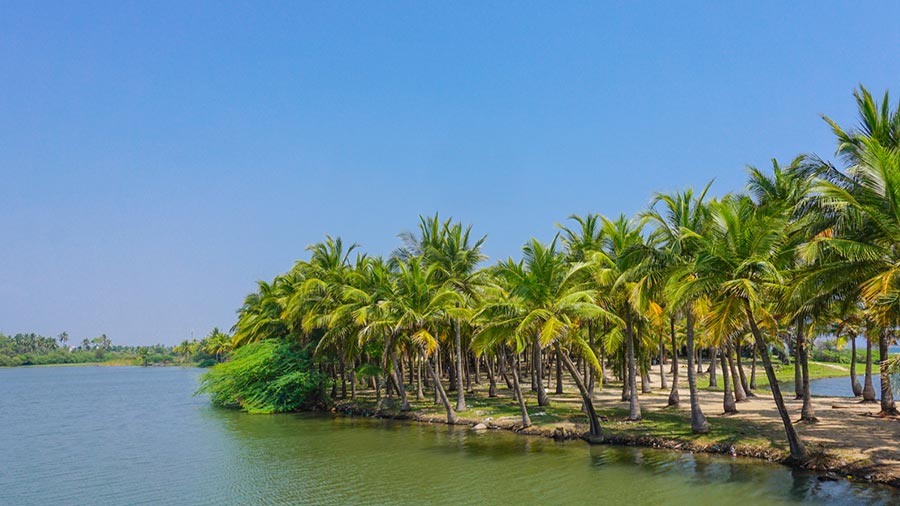The northwestern Indian metropolis of Chandigarh is among the country’s wealthiest regions, known for its beauty, urban infrastructure, and good living standards. Chandigarh’s development agenda is aligned with most Indian states and puts renewable energy, low carbon industries, and the IT sector at the center of the city’s growth, creating several opportunities for foreign investment.
Chandigarh is a union territory of India and is located about 165 miles (265 km) north of New Delhi. It is bounded by the states of Haryana and Punjab, serving as the joint capital for both.
The union territory consists of the city of Chandigarh, several towns, and a number of adjoining villages, and is administered by the governor of Punjab, assisted by a senior officer. Both officials are appointed by the federal government.
Famed as the ‘City of Beauty’, Chandigarh is perhaps best known for its gardens, impressive architecture, and serene lake. The city was designed by Swiss-born architect Le Corbusier and completed in the 1960s.
The metropolis of Chandigarh is home to some 1.1 million people. It is considered one of the best-planned cities in India, demonstrating a rare harmony between modernism and the preservation of nature. These features, enhanced by its location in the foothills of the Shivalik Hills, also contribute to its high living standards – often compared to some of the best cities across the world.
The economy of Chandigarh
Chandigarh’s Gross State Domestic Product (GSDP) was INR 436,743.4 million (US$ 6,195.8 million) in 2019-20, making it the third wealthiest state or union territory in India, behind Goa and Sikkim. GSDP rose at a compound annual growth rate (CAGR) of 10.52 percent between 2015-16 and 2018-19.
Chandigarh also has the largest number of wealthy people in India, according to data from the National Family Health Survey. Some 79 percent of the population of Chandigarh falls in India’s highest wealth quintile. The territory is deemed wealthier than Delhi – in which 68 percent fall into the top quintile, and Punjab – where 61 percent fall into the top 20 percent. Only 1.6 percent of Chandigarh’s population fell into the lowest wealth quintile.
A sizeable proportion of the working population, by virtue of the city’s role as a state capital for Haryana and Punjab and the union territory itself, work in administrative services. The city is occasionally referred to as the “Pensioner’s Paradise”, a nod to the number of retired civil servants who reside here. But despite being jovially known as such, 68 percent of Chandigarh's population is of working age – 15-59 years.
Chandigarh’s developed infrastructure and high living conditions continue to play a part in its growth. While the city was never envisaged as an industrial hub, Chandigarh attracts skilled labor from across India, and consequently, investment.
The region is not an export base, serving adjacent states rather than international markets. However, Chandigarh recorded US$94 million worth of exports in 2021-22. Chandigarh’s export promotion plan, formulated by the Government of India, now aims to double the city's exports by 2026.
Major investors in Chandigarh include Bhushan Power and Steel, CDIL (semiconductor manufacturer), Essen Deinki (manufacturer of high-precision, high-performance electrical & electronic connectors & microswitches), Groz-Beckert (producer of industrial needles, precision components and fine tools as well as systems and services for the production and joining of textiles), Him Overseas (manufacturer and exporter of construction fittings), Kropivnik Cableways Pvt Ltd. (cableways and ropeways manufacturer), and Winona Van Norman (exporter and manufacturing automotive machine shop equipment).
Major industries
The union territory has 15 large / medium scale industries along with 2950 small scale units according to Chandigarh Online. Some 40 percent of the existing small-scale industries in Chandigarh manufacture components for the tractor industry. Other heavy industry units manufacture other agricultural equipment, auto parts, tires & tubes, electronic items, and basic metal & alloys.
Land availability is an ongoing constraint for the further development of heavy industry and manufacturing. When the city was designed, a limited area – around 1450 acres – was set aside for the development of small-scale and pollution-free industries.
The territory is also home to several pharmaceutical companies, including PCD Pharma, Biocordis Pharma and Elfin Drugs. There are almost 800 pharma companies in Chandigarh, including satellite hubs Panchkula and Mohali.
Tourism is also a significant employer in Chandigarh. Some four million people, primarily from India, travel to the city and territory every year.
Infrastructure and the development agenda
Chandigarh is well connected to other regional centers, including Ludhiana in Punjab and Shimla in Himachal Pradesh, allowing regional trade to flow between the metropolises of northwestern India. The NH5 – a national highway – passes through the territory, linking Haryana and Punjab.
Meanwhile, Chandigarh airport links the territory with places further afield. The airport caters to six domestic airlines and connects Chandigarh to 17 domestic destinations and two international destinations – the UAE emirates of Dubai and Sharjah. Chandigarh is thus just one stop away from hundreds of European, American, and ASEAN destinations, including London, New York, and Hong Kong.
The airport was also named the ‘Best Airport for Customer Satisfaction’ in the Asia Pacific for three years in a row by ACI World International in the under two-five million PAX category. After forthcoming upgrades, it will also have cargo capacity, providing a further boost to domestic and international trade.
Chandigarh is also a leader in renewable energy in India. Almost 70 percent of the overall power requirement of the city is generated from renewable sources. However, the state government is still looking to further its green credentials. It was announced in April that the administration would install solar panels on residential buildings free of charge. The latter is likely to provide a sizeable uplift to the solar panel manufacturing and installation industry.
The Chandigarh Administration is also focusing on the promotion of the information technology (IT) sector, which requires less space and produces fewer greenhouse gases than heavier industries. Chandigarh IT Park, also known as Rajiv Gandhi Chandigarh Technology Park, attracts top IT companies. Given its location near Delhi and Haryana and therefore access to a talent pipeline, Chandigarh attracts IT firms and multinational companies looking for tier-2 city office space.
Meanwhile, around 10,000 sq.ft. of space has been earmarked at the Punjab Engineering College – a public academic institution in Chandigarh – to be rented out to relevant entrepreneurs with businesses in the appropriate sectors.
Education
Chandigarh has a strong network of 113 government schools, seven government-aided schools, 83 recognized private schools and 7 central government schools run by Kendriya Vidyalaya /Navodaya Vidyalaya Samiti/ Air Force.
The education system has propelled literacy rates in the territory, which stood at 86 percent in 2011, considerably higher than India’s average of 69 percent. In an effort to further enhance educational outcomes, particularly among less fortunate populations, the Chandigarh Administration provides incentives / scholarships on grounds of attendance and academic potential. This includes the provision of free textbooks, free winter uniforms up to grade 8, among other incentives.
The union territory is also home to several universities, attracting and developing talent. There are five government colleges, six private colleges, 10 AICTE-approved engineering colleges, and two polytechnic institutes. Two of the country’s several hundred universities – the Punjab University and the Punjab Engineering College – reside in Chandigarh. The city’s strong education system has only served to further the attractiveness of the territory to foreign capital and multinational firms.
Growth and investment opportunities
Chandigarh has a fast-growing economy, is attractive for talent, and boasts a government agenda that emphasizes low-carbon industry and renewables. Collectively, these factors contribute to a wealth of foreign investment opportunities available in the union territory.
|
Sector |
Description |
|
Infrastructure development |
The government export plan aims to set up a fully operational cargo facility at the city’s airport and an inland container depot (ICD), online portal, single window system and export ancillary infrastructure. |
|
Green energy |
The government has approved a plan to promote further renewable energy development. Deadlines have been set to complete all these activities. |
|
Small industries |
The city aims to enhance to export of certain products, such as needles, auto parts, tractors parts and information technology/ information technology-enabled services. For example, there are over 1,150 ancillary units producing components for tractor industries |
|
Information technology |
Many MNCs like Quark, Infosys, Tech Mahindra, etc. have set up their base in the city. The sector is heavily promoted by the Chandigarh government. |
|
Tourism infrastructure |
The city is a popular tourist destination, with hotel and other tourism infrastructure in demand. Hyatt and Accor have moved into the city in recent years. |










